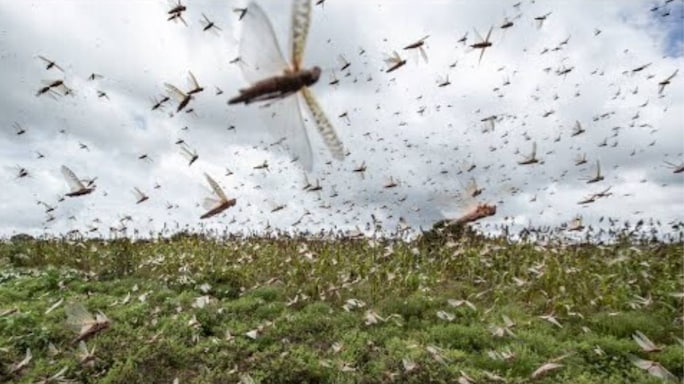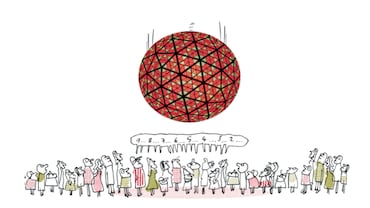- HOME
- /
- Odds and Ends
- /
- Who knew
- /
India And Locust Invasions: 10 Facts You Should Know From History
Locusts have been invading India for centuries, sometimes to devastating effect
 A swarm of locusts (Screenshot courtesy YouTube)
A swarm of locusts (Screenshot courtesy YouTube)
1. One of the scenes in the Mahabharata compares the weapons flying about in the battlefield to locusts. It says, "Like a great cloud of locusts, the shafts covered Arjuna’s chariot.”
2. Records of desert locust “outbreaks” were maintained only from the 19th century onwards. Some documents speak of many locust invasions in India between 1812 and 1891.
3. Some of the most devastating locust invasions in India took place between 1926 and 1931. In these years, five continuous invasions led to huge losses even leading to “heavy mortality among cattle, goats and sheep”, according to a report by one of India's foremost locust experts, H. S. Pruthi. The most serious was the one in Sindh of undivided India in 1929, and it was declared a ‘locust plague’. In the early 1930s, the colonial government set up a permanent anti-locust organization in India.
4. During yet another massive invasion in 1943, an aerial offensive was launched. Military planes were used to spot the breeding grounds and later, pesticides were sprayed from the air. Sindh was again the most affected area.
5. India and Pakistan may have been at loggerheads since 1947 over multiple issues, but a locust attack is something that has managed to unite the two nations’ administrations. A 1950 New York Times report talks of both governments sending joint "destroyer squads" to both sides of Punjab to tackle the enemy. The locusts, however, arrived in Jodhpur that year. Indian and Pakistani anti-locust teams closely coordinate with each other, to this day.
6. In July 1951, India established its permanent Locust Control Organisation in Bikaner, Rajasthan.
7. In 1952, the locust attack in northern Indian was so severe that the Indian government had to seek support from the US. Small planes, flown by US pilots, sprayed pesticides over large tracts of land. A New York Times report from May 1952 notes how swarms of locusts darkened the skies of Delhi, with school children fighting them with "badminton and cricket bats."
8. The largest-ever locust swarm over Delhi was observed in July 1954, when it again darkened the skies for a few days. According to reports, 12 swarms of locusts hovered over Delhi during that time.
9. By the late 1950s, India had become an expert in locust control. In 1958, it sent a 21-man squad to Saudi Arabia to take on a massive locust invasion.
10. The last locust 'plague' to hit India was in 1988-90, when Rajasthan and the regions bordering Pakistan bore the brunt. The attacks that happened in the 1990s and 2000s have been declared 'outbreaks' or 'upsurges' by the United Nations' Food and Agriculture Organisation.






